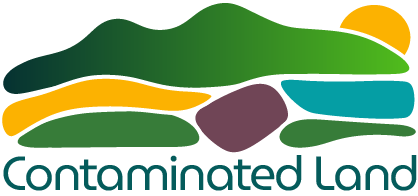Impermeable barriers are physical structures made of materials that do not allow water or gas to pass through. They are used to contain contaminants in the ground by isolating the source term and preventing the spread of pollution, particularly in groundwater or soil gas. These barriers can be constructed in various forms such as capping systems, slurry walls, sheet piling, or by ground freezing. The configuration and installation depend on factors like the direction of groundwater flow and site-specific risks. Barriers are usually keyed into an impermeable layer below the contaminated zone to prevent underflow.
These systems can be installed around an entire site, especially where multiple sources of contamination exist, to prevent off-site migration—for example, towards a nearby river. They are commonly used as a long-term risk management approach and may contain active materials such as organophilic clay or activated carbon to absorb residual contaminants. However, the contaminants themselves are not removed; instead, they are immobilised in situ. Ground freezing can be employed as a temporary containment method, creating a physical barrier using frozen soil.
The advantages of impermeable barriers include their ability to manage large and complex contamination zones, availability of skilled contractors, and compatibility with land re-use strategies such as soft landscaping or renewable energy projects. However, they also have several drawbacks. These include the need for indefinite maintenance and monitoring, limitations on future land use, the risk of water ponding within the barrier system, and potential long-term environmental liabilities. In some configurations, collected water or gases may require treatment, and flooding risks might increase without adequate drainage measures.
From a sustainability and regulatory perspective, these systems are effective at reducing immediate human health risks but present long-term societal challenges. Concerns include passing environmental burdens to future generations, ongoing resource consumption during construction and maintenance, and the need for institutional controls. Regulators may require assurance that financial provisions are in place for continued oversight. Although impermeable barriers serve a valuable role in risk management, they are often best used in combination with other remediation methods, especially when long-term site reuse or contaminant removal is a goal.


